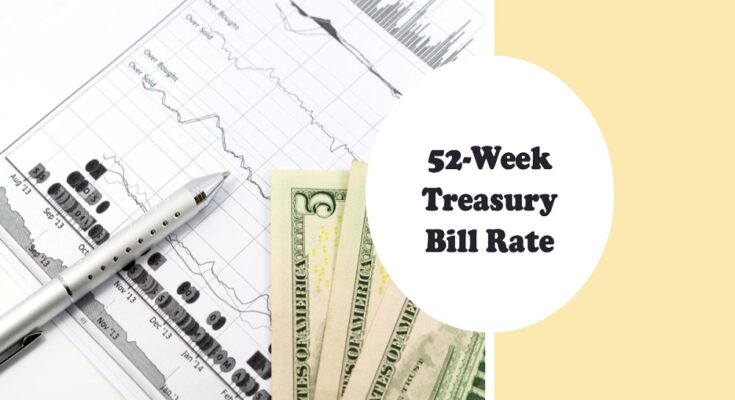The 52-week Treasury bill, also known as a one-year Treasury bill, is a short-term security issued by the U.S. Treasury. It’s part of a wider category of government securities referred to as Treasury bills, or T-bills, which also include 4-week, 13-week, and 26-week maturities. The rate of the 52-week Treasury bill is of considerable interest to investors, financial institutions, and policymakers alike.
What is a Treasury Bill?
A Treasury bill is a government debt security issued by the U.S. Department of the Treasury to fund the national debt of the U.S. T-bills are considered one of the safest investments available since they are backed by the full faith and credit of the U.S. government.
T-bills don’t pay periodic interest like bonds. Instead, they are sold at a discount to their face value, and the investor earns a return when the bill matures at its full face value. The difference between the purchase price and the face value is the interest earned by the investor.
The 52-Week Treasury Bill Rate
The rate of the 52-week Treasury bill is determined through a competitive bidding process conducted by the Treasury Department. The “rate” of a T-bill is the discount rate, which is the difference between the purchase price and the face value expressed as an annual percentage yield.
You can find the most recent 52-week T-bill rate by visiting the U.S. Department of the Treasury’s website, specifically the Treasury Direct section, which regularly updates auction results for all Treasury securities.
Why is the 52-Week T-Bill Rate Important?
The 52-week Treasury bill rate serves several crucial functions in the financial markets:
- Benchmark Rate: It’s used as a benchmark rate for various financial matters, including adjusting the interest rates on certain types of loans and setting the rates for other types of government securities.
- Monetary Policy: The Federal Reserve uses the rates on Treasury bills as a tool in implementing monetary policy. By buying or selling T-bills, the Federal Reserve can influence short-term interest rates.
- Investor Sentiment: The demand for T-bills, reflected in their rates, can be an indicator of investor sentiment. In times of economic uncertainty, demand for T-bills often increases (and thus rates decrease) as investors “flight to safety” because T-bills are considered virtually risk-free.
- Risk-Free Rate of Return: In financial models, the 52-week T-bill rate is often used as the risk-free rate of return, a foundational concept in modern finance theory.
Conclusion
The 52-week Treasury bill rate is a critical component of the U.S. and global financial systems, informing everything from individual investment decisions to central bank monetary policy. It’s a figure well worth keeping an eye on, whether you’re an investor, a borrower, or just interested in the overall direction of the economy.




